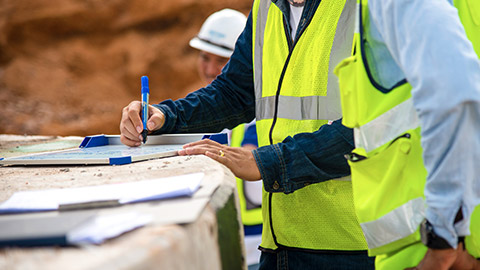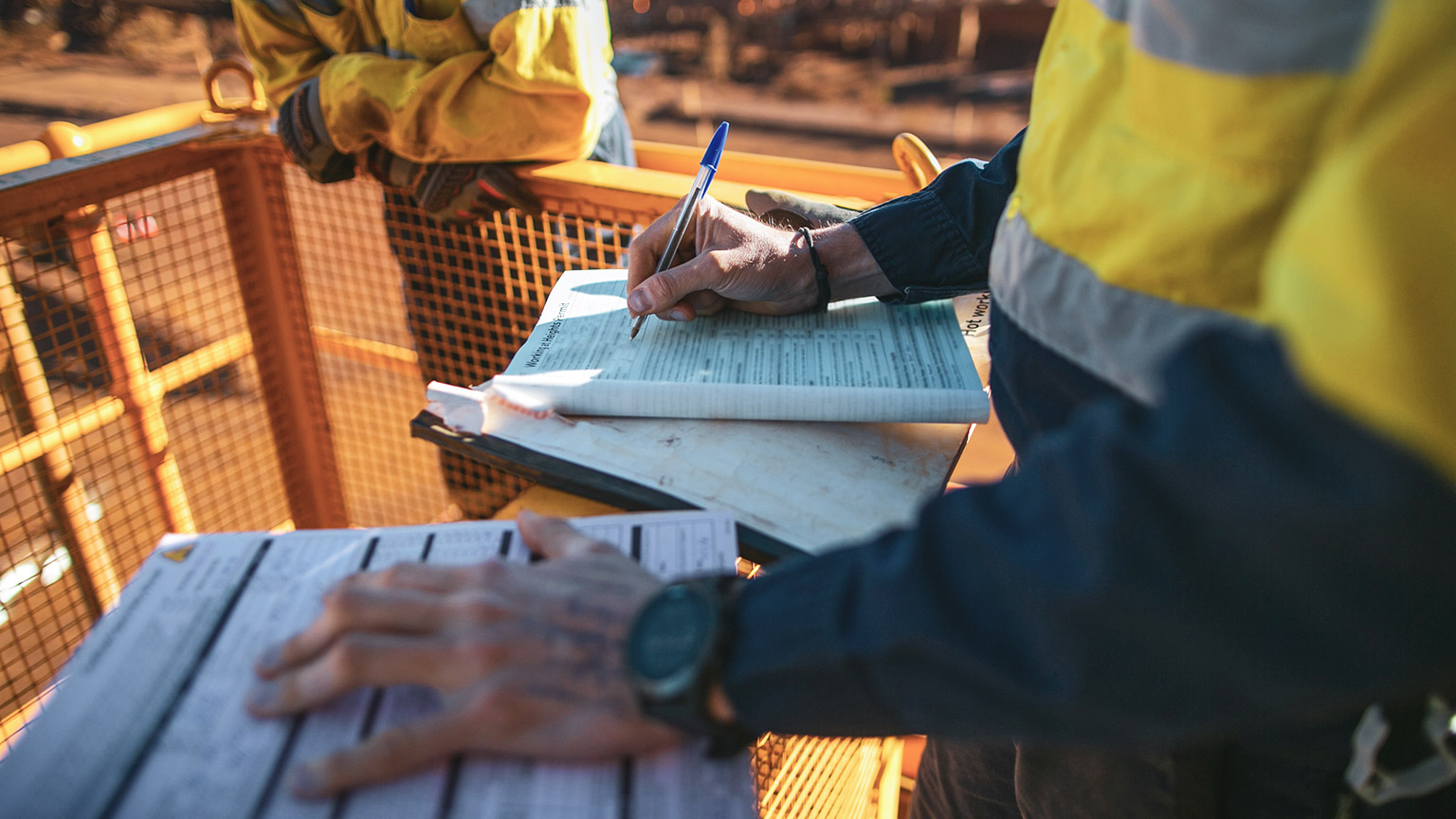Where WHS is concerned, it is a mandatory requirement for accidents, hazards and incidents to be reported. We are going to take the time to develop your understanding of why you need to familiarise yourself with reporting. Regardless of your level of skill or experience, you will be at some point faced with reporting, you will need to know what information needs to be included and how to illustrate it in a clear and thorough manner.

There should be no complacency surrounding reporting. No matter how small you may think an incident is, or if you are unsure whether it needs to be reported, make the report regardless. It is better to have a report than not to have one.
There are several reasons why reporting hazards, accidents and incidents are important. Some of these include:
Data collection
Reporting means that data can be collected, collated and analysed so that consistencies are identified. It may be that a hazard is emerging or there is a fault in a piece of equipment that needs rectification.
Training needs analysis
Training of workers is also documented. There is a common denominator with undertrained workers; with gaps in their training identified, workers can receive sufficient training.
Support for injured workers
Without reporting, there is a risk that workers injured at work could fall through the gaps and not receive the support that they need, and the hazard that caused the injury in the first place may be ongoing, causing injury to others.
Funding
Training, research and equipment can be costly; this is where funding can come in handy. Without written documentation to support your funding request, it is unlikely you will receive it; therefore, written reports help secure funding for safety research, training and equipment.
Legislation and enforcement
We know legislation is subject to change. Reporting helps to inform legislation and enforcement—some legislation changes based on reports, especially if the reports are relevant to injuries.
Awareness
Reporting helps raise awareness of emerging issues.
Workplaces have policies and procedures around reporting and there are Commonwealth, state and territory requirements for reporting as well. As a general rule, you should report all hazards, risks, near misses and accidents. As a worker, you have a responsibility to report any illness, accident or near-miss you are involved in or see at the workplace. You should report such incidents to your immediate supervisor, WHS committee, health and safety representative (HSR), a union delegate or first aid officer. If there is any plant or equipment involved you must make the operator aware of the problem immediately. Once the relevant personnel become aware of an illness, accident or near-miss, it must be determined whether it is a reportable incident.3
Notifiable incidents
A notifiable incident is an incident which you have a legislated obligation to report to the responsible authority in your state or territory. Notifiable incidents may vary slightly depending on your state or territory but will generally include an incident where:
- There is a death.
- A person requires medical treatment within 48 hours of being exposed to a substance at work.
- A person requires immediate treatment as an inpatient at the hospital.
- A person requires immediate medical treatment for one of the following injuries; amputation, serious head injury, serious eye injury, removal of skin (de-gloving/scalping), electric shock, spinal injury, loss of bodily function and/or serious laceration.
Activity: WorkSafe in each state and territory has requirements for reporting notifiable incidents. Find your state or territory’s requirements for reporting notifiable incidents. Research the procedure for reporting a notifiable incident. There are other incidents that require notifications to the relevant authority as well.

All building and construction workplaces should have policies and procedures for reporting WHS hazards and incidents. They may be online or hard copy. They will usually include forms and risk assessment templates. A typical incident report requires the following information to be given:
Information about the PCBU/employer:
- name of company
- office address
- address of the site where the accident happened
- the main type of activity carried out at the workplace (e.g. building construction)
- major trades, services or products associated with this activity
- the number of people employed at the workplace and whether there is a WHS committee/HSR at the workplace.
Information about the injured or ill person:
- name and home address
- date and country of birth
- whether the person is an employee of the company
- job title and main duties of the injured person
Information about the injury/illness:
- date of medical certificate
- type of illness as shown on the medical certificate
- whether the injury resulted in a fatality
- information of any chemicals, products, processes, or equipment involved in the accident.
Information about the injury or dangerous occurrence:
- time and date that it happened
- the exact location of the event
- details of the injury type of hazard involved
- exactly how the injury or dangerous occurrence was caused
- how the injury affected the person’s work duties
- details of any witnesses
- details of the action taken to prevent the accident from happening again.
- details of the person signing and the date of signing the accident report are also required.
When the report is completed, copies are generally sent to the company’s worker’s compensation insurance organisation and a copy is kept by your employer.
Safe Work Australia have an incident notification fact sheet. You can download the fact sheet at Safe work Australia: Incident notification
The following scenario will provide you with an example of an on going near miss that has occurred in the workplace and an injury sustained as a result of this near miss. You will also find a completed report based on this scenario and how the information will need to be displayed. Please keep in mind, there are various templates of how you can report accidents, incidents and near misses and these may vary, however, the information which needs to be included will stay the same regardless of the template structure.
Scenario
The worksite has been left quite untidy lately and a lot of uneven ground. On Monday, Jake stumbles on some loose rock and gravel as he is making his way through, he is not injured and carries about his work. There is no report conducted.
Wednesday comes around, and Jenny trips on a piece of plastic that has been left in the walkway, she drops what she is carrying, but is not injured. Again, because Jenny was not injured, there was no report made.
Thursday, however, sees more and more rubbish piled up and not disposed of, some of which includes broken glass and off cuts of wood. Dean is delegating instructions to another team member and trips over the wood landing, twisting his ankle and cutting his arm on the glass, with the glass becoming lodged in the skin This incident required an ambulance as Dean was not able to weight bare on his foot and the laceration on his arm needed stitching.
In this scenario, there were two near misses that went unreported, because they were unreported, the safety of the site was not addressed and as a result, another team member’s safety was compromised and he needed hospital and medical treatment.
In the event of a near miss, one of the ways in which you could document may be in a work diary, or in a table similar to the following.
Click the Near miss records to view an example of how a near miss may be recorded.
Dean on the other hand, was injured and needed urgent medical attention. In this case, a full incident report must be completed. The following is an example of a completed incident report form.
Click the Type of Incident: to view the example.
Work orders
In addition to the various types of reports you will need to make based on incidents, you will also need to consider work orders. Work orders are forms that are given to or created by a site supervisor to carry out a specific job. They are particularly important to understand as some of them are maintenance related and detail what repairs need to be made on jobs (among many other uses). The following are the eight (8) pieces of information commonly found on a work order.
1. Name, home address and contact details of client
2. Job number
3. Type of job, for example, maintenance
4. Company details, name, and address
5. The issue
6. Details of the job
7. Contractor details
8. Date
Click the link to the following sample work order form to learn how each of these details is presented. It is strongly advised you read through this information as you will be asked to interpret a work order.

